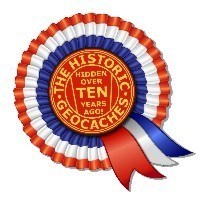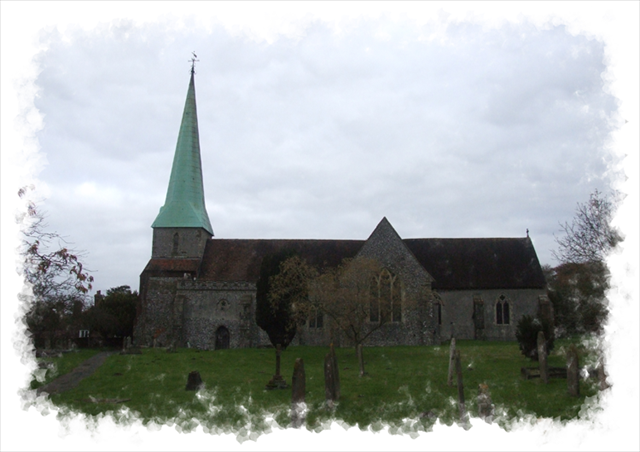

St. John the Baptist
DAYLIGHT VISITS ONLY PLEASE
History suggests that there was a church in Barham in 809 A.D., and evidence of the original Saxon floor has been discovered under the tower, but the earliest part of the present building starts in the 12th century with the base of the Tower, and continues for the following three hundred years. The church therefore contains Early English, Decorated and Perpendicular styles of architecture with 21st century additions.
The church is cruciform in shape, although the addition of the 15th century south aisle has 'unbalanced' the symmetry. In the 1880's the Nave floor was lowered, the Choir and Chancel was raised, heating installed, and the entrance porch added. The Nave is clear, light and spacious. In the tie beam roof are some of the original fourteenth century timbers and the arcade with its three arches leading into the south aisle of the same date. The Chancel and Sanctuary have an open appearance because there is no chancel arch. In the fourteenth century east window Jesus and John the Baptist, both as boys, with Mary, are represented in modern stained glass by Martin Travers. A piscine, formerly used as a basin for washing the hands of the priest and chalice, is on the south wall. An aumbry or cupboard, used either for the reserved sacrament or for the sacred vessels and books, is just visible in the east wall and is currently used for the reserved Sacrament. The stately English Altar is modern.
The Transepts have each contained chapels in the past. The North Transept was a Chantry chapel and its blocked up east window indicates where the altar was situated. The whole space became the vestry and now includes the Benefice Office. During the refurbishment of the church in 2004 the raised wooden floor was installed to cover the uneven area of 14th century tiles, marble slabs and a vault, and an upper floor installed to house the organ pipes. The three brasses on the north wall come from the marble floor memorials under the vestry and were lifted many years ago. They have recently been mounted on cedar to preserve them. The oldest (c.1370) is of a civilian but is mutilated. The other two (c.1460), are of a woman dressed as a widow and a bare headed man in plate armour. The figures are believed to be of John Digges and his wife Joan, of Digges Place, who are buried in the chapel. Set in the wall just behind the modern pulpit is a curious stone, once used to support a statue. The round stone with a cross was originally a Saxon grave marker.
The South Transept is now used as the Lady Chapel, "the Chapel of Our Lady". The oak altar was once the high altar. The walls contain various mural tablets. Hanging high on the west wall is a helmet, said to have belonged to Sir Basil Dixwell of Broome Park. The helmet probably never saw action but it was carried at his funeral in 1641. Also hanging nearby is the standard of the now defunct local branch of the British Legion. The modern glass window was designed and made by Alexandra le Rossignol to mark the Millennium. In the corner is a 'squint', probably used to give those outside a view of a statue or an altar.
The 14th century Font situated in the South Aisle is large enough to submerse a baby, as would have been the custom of the time. The bowl is octagonal, representing the first day of the new week, the day of Christ's resurrection. The cover is Jacobean (17th century). Nearby is the curious South Doorway with one door inserted within a larger opening and was probably the usual way in to the church before the 19th century refurbishment lowered the floor of the Nave and the new north door added. The imposing but overwhelming marble memorial to several members of the Dixwell family, who built Broome Park, if from the eighteenth century and once stood in the South Transept. At the West End is hung the lists of Rectors and Priests-in-Charge, the first known being Ortho Caputh in 1280A.D. Notice Richard Hooker 1594 the famous author of "The Laws of Ecclesiastical Polity". He was also Rector of Bishopsbourne where he lived.
The tiles incorporated into the wall were originally part of the Chancel floor about 1375. They were left by John Digges, Rector of Bishopsbourne, whose will instructed that he was to be buried in the Chancel at Barham and "my executors are to buy Flanders tiles to pave the said Chancel". Further tiles were recently found in the Vestry.
Coloured frescos once decorated the walls and pillars, the last to fade being a representation of a ship to the east of the Nave. Statues are recorded of St Mary the Virgin, St Anthony, St Christopher, St Nicholas and St John. There is no evidence of a Screen but a will of 1475 notes a Rood, presumably over the Chancel Step. The old Communion plate has been lost or stolen and the only remaining piece is a large silver paten inscribed "St John the Baptist, Barham 1772".
In 2004, a Gallery was reinstated in the Tower as the Ringing Chamber with access by the modern staircase. The peal consists of five bells and is rung regularly.
Treble John Wilner of Borden 1633
2nd Thomas Mears of Whitechapel 1834
3rd Samuel Knight of Holborn 1730
4th Samuel Knight of Holborn 1730
Tenor Mears and Stainbank of London 1947
The stained glass window by the North Door is of St George and the Dragon, which was given by the survivors of the 23rd Signal Company Regiment as a memorial of the First World War. The window is the work of Martin Travers. Barham Downs have seen much military service- from Saxon battles to a training ground and assembly point for embarkation in modern times. The Porch is worth a pause on the way out. Two wooden plaques list the names of the men from the village who were killed in the Great Wars, among them being Field Marshall Lord Kitchener who lived within the parish boundaries at Broome Park.
This cache has been placed with the very kind permission of the Rev'd Stephen Hardy - Priest in Charge and Area Dean for East & West Bridge.
If anybody would like to expand this series, please do, but could you let sadexploration know first so he can keep track of the Church numbers and names to avoid duplication. To view the church micro stats page, please click here.
Covid-19: If you have no intention of signing the physical logbook in this geopot at this time, please visit when you are prepared to sign it. ALL physical logbooks MUST be signed for a claim to a find to be made.

goes to TNB